Street furniture trends to look out for in 2024
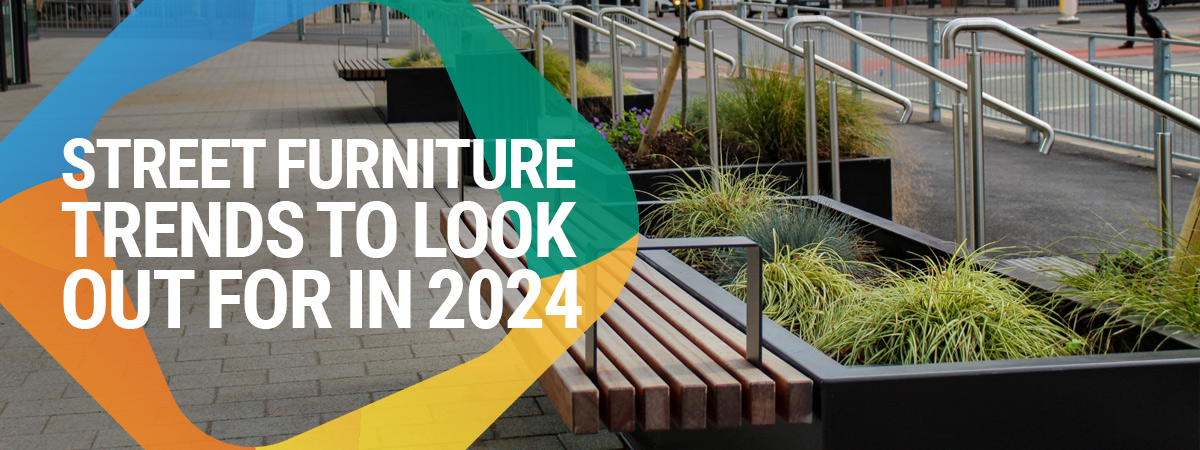
Our towns and cities are constantly evolving to cope with changes in social, technological, and environmental needs.
In recent years, there has been a shift in urban design to accommodate the increasing need for physical and social connections, as well as community spirit. Central to these changes has been the use of street furniture, where much more consideration is given to the design and placement of outdoor furniture to cope with the changing social demands.
But how is street furniture set to evolve in 2024?
Here we discuss five key areas which we believe will influence street furniture design and specification.
The use of sustainable materials
As part of the UK Government’s Net Zero Carbon Strategy, all construction professionals and projects need to align with the overall goal to reduce carbon emissions, ultimately limiting global warming and the negative impact of climate change on the environment.
A large part of this includes the use of recycled materials during construction. In the case of street furniture means manufacturing street furniture products from recycled materials or sustainable sourced wood.
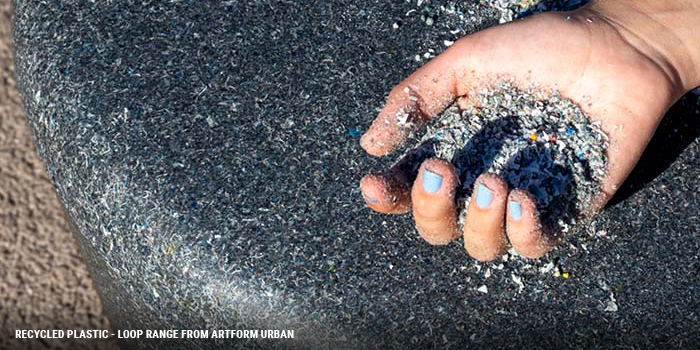
This not only reduces their impact during manufacturing, but also means at the end of their useful lifecycle, the products can be recycled and turned into other products. This means fewer finite resources are involved in the lifecycle process, minimising the whole life carbon levels.
Manufacturing street furniture from recycled materials isn’t a new concept, but manufacturers and architects need to continue to push the boundaries in material selection, and using eco-friendly materials where previously they haven’t been used.
For subcontractors, this means adapting to working with these new materials, which may have different installation and maintenance requirements compared to traditional materials. Also, it is important to install responsibly sourced timber or recycled materials for street furniture products, to align with a project’s sustainability goals and values.
The rise of modular furniture
Modular street furniture designs that can be easily reconfigured or adapted to different spaces are becoming increasingly popular in urban specifications.
Architects are realising their client’s visions with integrated street furniture that gives a uniform visual within an urban setting, so all street furniture matches in terms of looks.
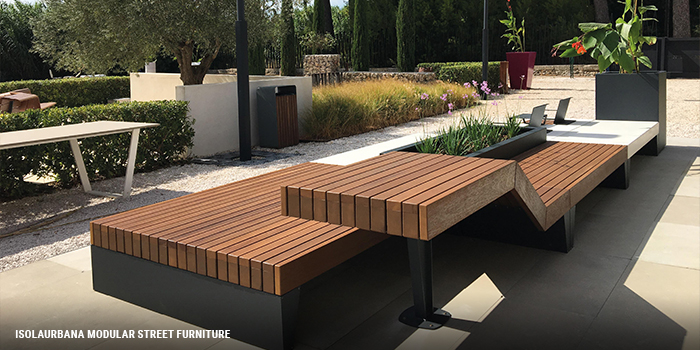
Modular street furniture allows for a unique approach to the specific needs of a project or outside space. Different modules can be combined in various ways, offering a wide range of design and installation possibilities.
This flexibility requires subcontractors to understand the various configurations and be adept at modifying layouts as per site requirements within a project.
Smart technology integration
The incorporation of smart technology into street furniture, such as USB charging ports, Wi-Fi hotspots, and environmental sensors, is on the rise.
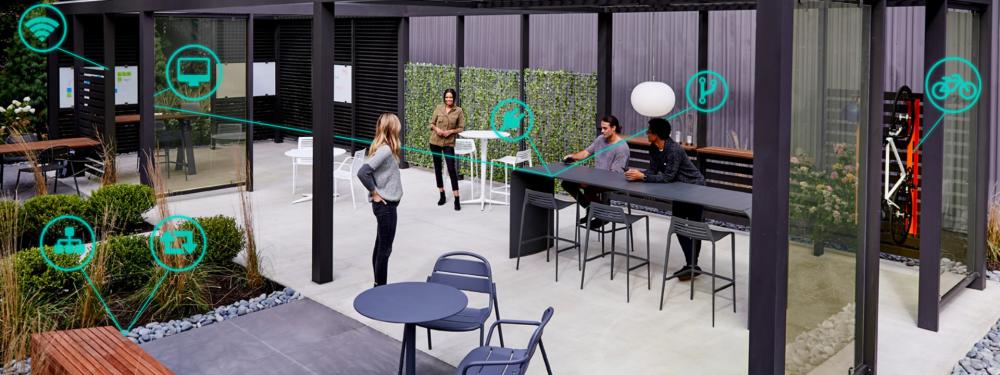
Socially, people want to feel connected on the move and the option for public charging points or Wi-Fi is increasingly demanded by local councils and commercial developments.
Subcontractors will need to have the technical know-how and skills to handle these installations, which often involve electrical components and connectivity features. It is important to not only have the skills and experience to set up the smart technology but also the hand-over to the client when installation is complete.
Inclusive and accessible design
There is a growing focus on designing street furniture that is accessible to all individuals, irrespective of their age, mobility, or ability, so everyone can use and enjoy public spaces.
The Equality Act was introduced in 2010 to protect individuals from unfair treatment and to promote a fair and more equal society, which is relevant in urban spaces and green areas.
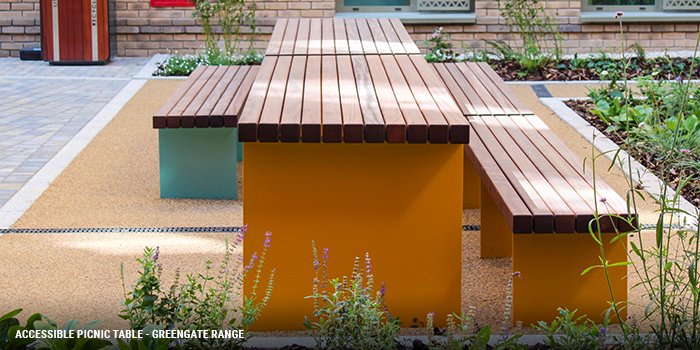
It sets out nine protected characteristics. These are age, disability, gender reassignment, marriage and civil partnership, pregnancy and maternity, race, religion or belief, sex, and sexual orientation.
Subcontractors have a duty to enable safe and independent access to streets and public spaces for people with protected characteristics, by installing accessible and inclusive street furniture designs.
Increasing influence of biophilic design and urban greening
Integrating plant life into street furniture, such as benches with built-in planters or green walls, is an increasing focus with architects and main contractors working on urban specifications.
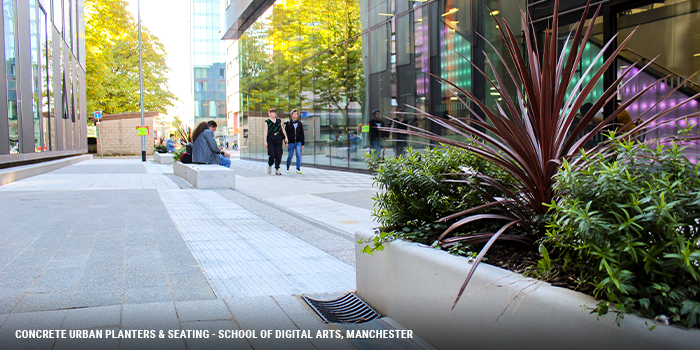
The goal of biophilic design and urban greening is to increase people’s exposure to nature within urban environments, which enhances their physical and mental well-being.
For example, London’s Green Infrastructure is in place to promote a network of green spaces, gardens, woodlands, and green features, across the vast urban environment. Part of this strategy involves well-designed street furniture that integrates planters and other greenery.
Subcontractors will need to coordinate with landscaping contractors to source, purchase and install street furniture that incorporates greenery. This will no doubt impact installation procedures, logistics and transporting the furniture to site, and even availability in the first instance as there is projected to be an increase in specification of street furniture that integrates planters and greenery.
Do you require assistance with your street furniture project?
If you are working on a project that requires street furniture in an urban or rural environment, talk to our team here at Street Furniture Direct.
Our straightforward and down-to-earth approach helps sub-contractors find the piece of street furniture quickly and easily and ensures the products you install will enhance your client’s project and stand the test of time.
Telephone us on 01625 879 442, email us at enquiries@streetfurnituredirect.co.uk